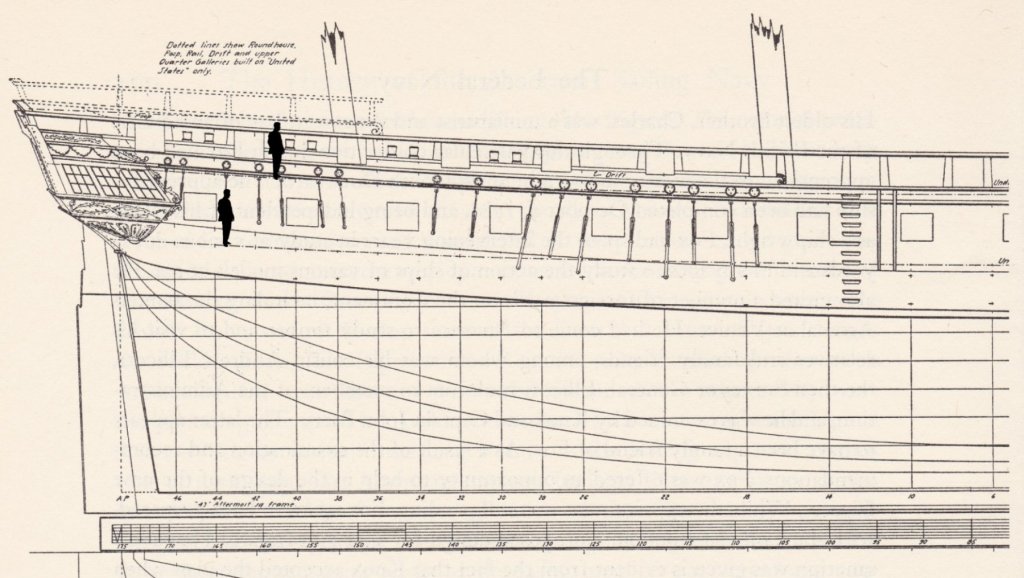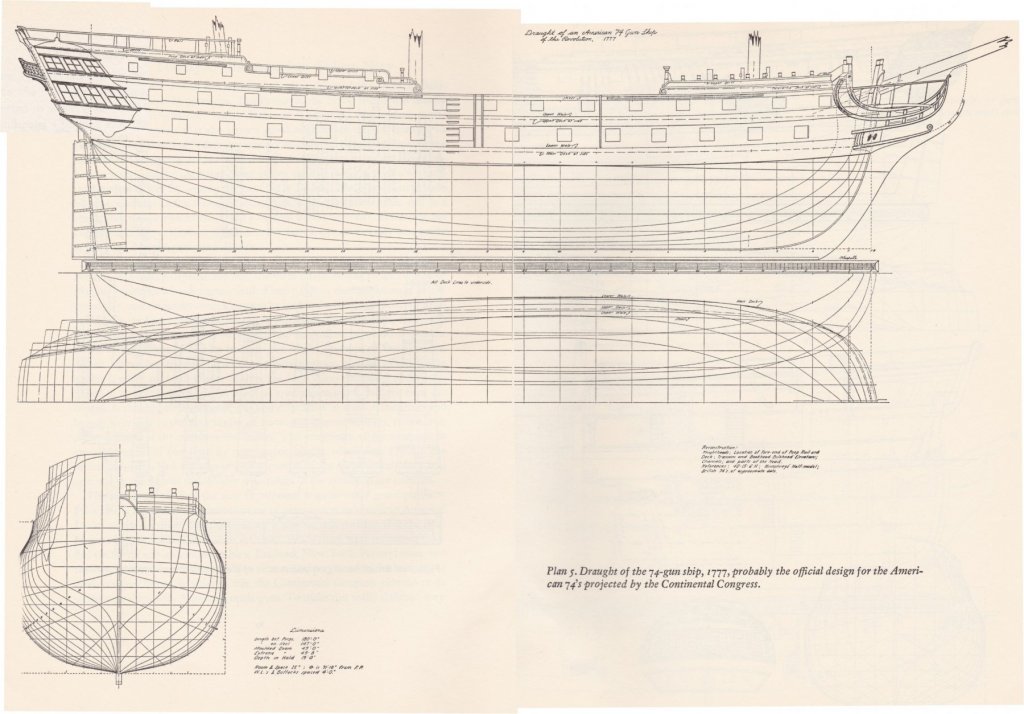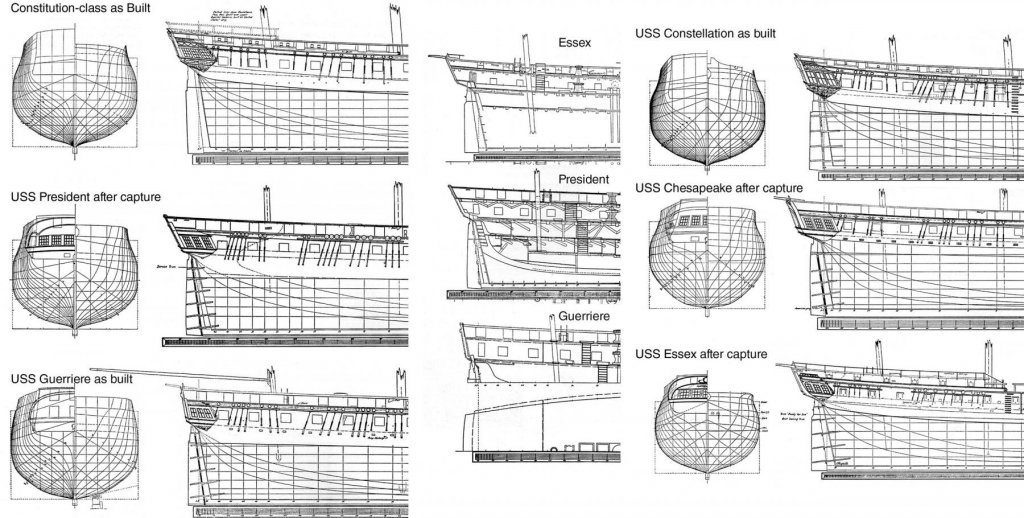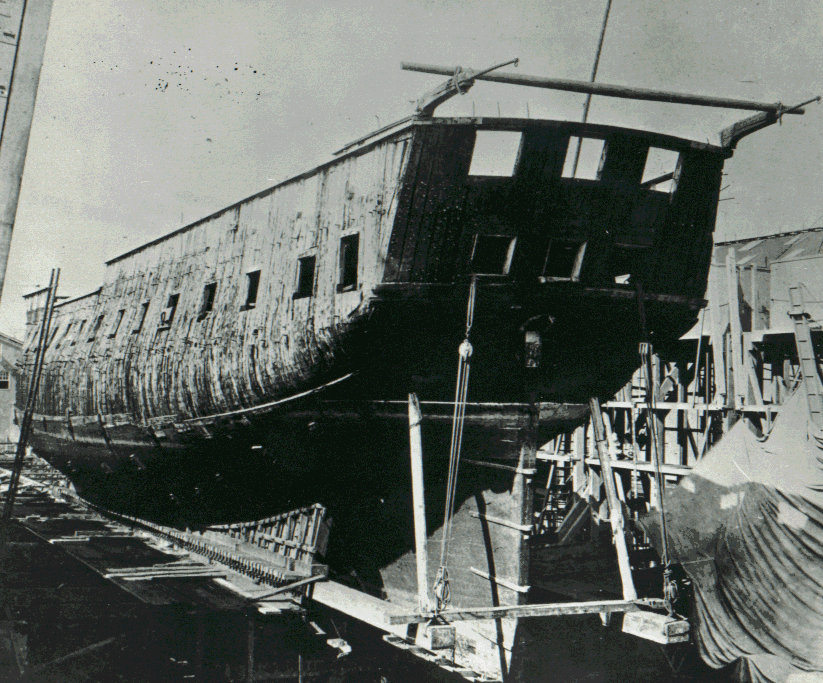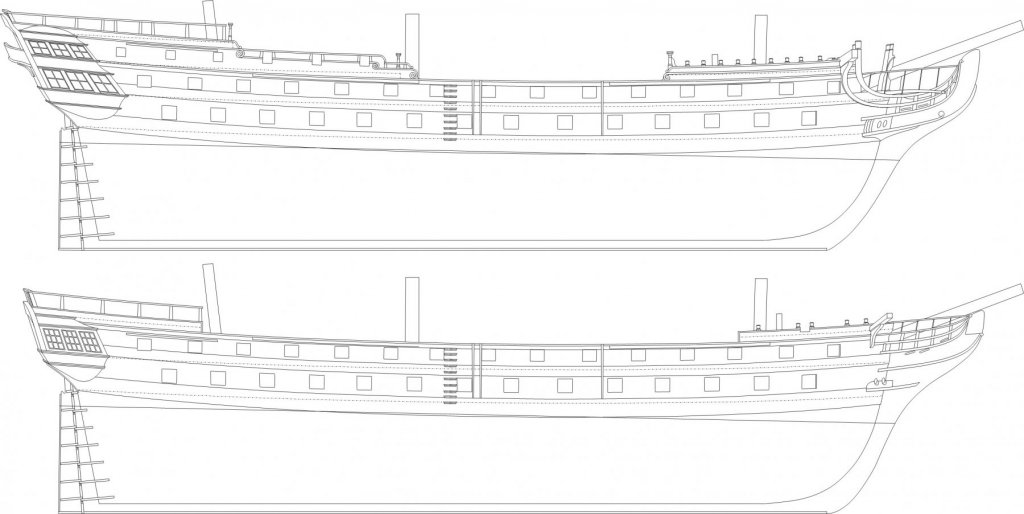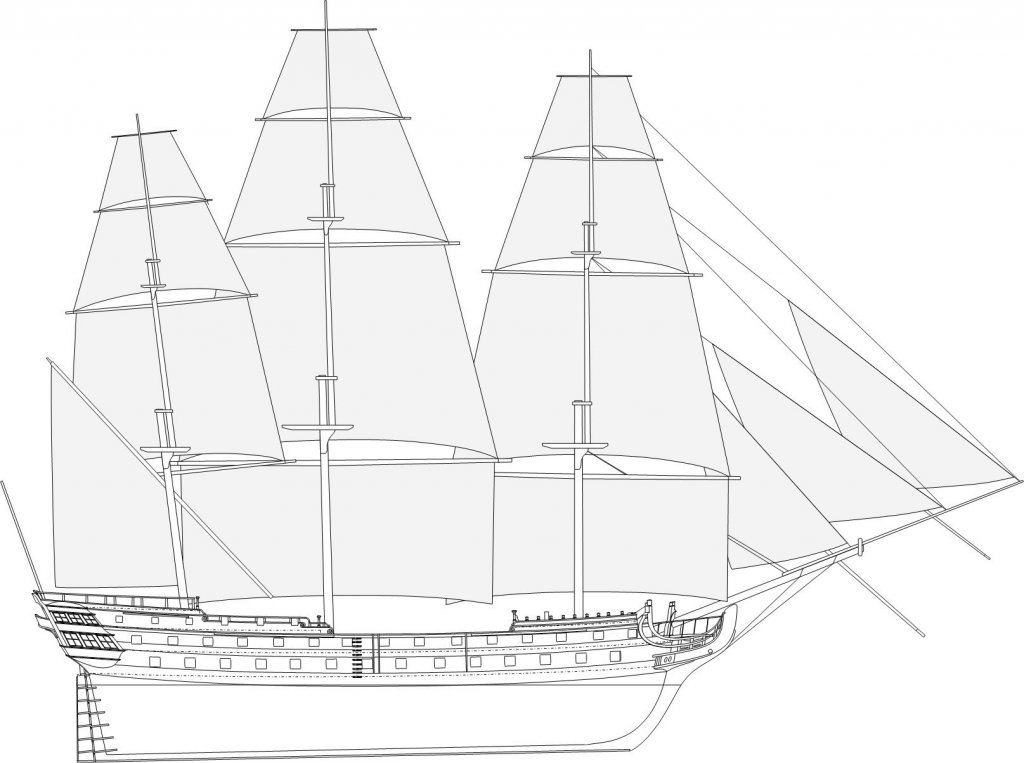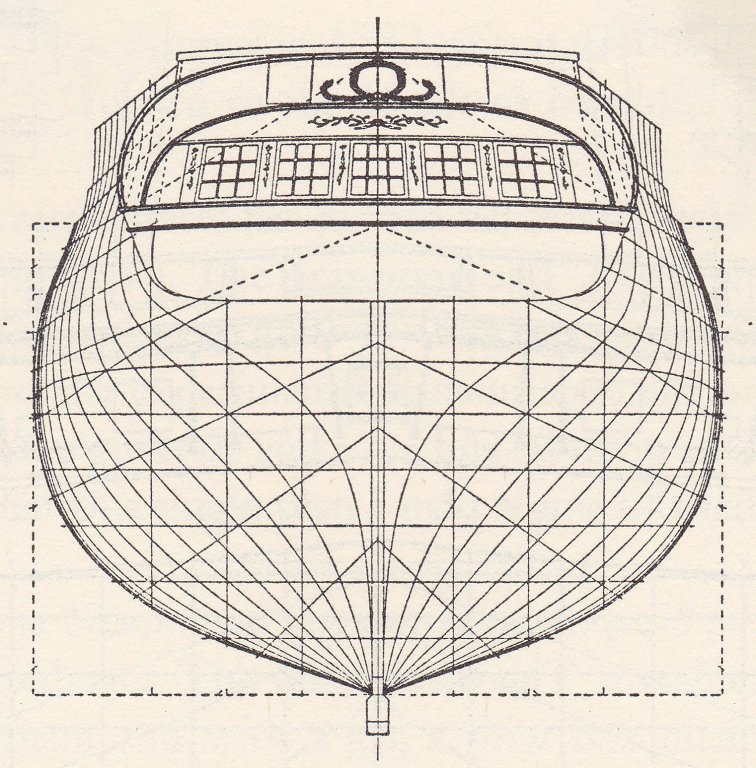
Talos
Members-
Posts
413 -
Joined
-
Last visited
Content Type
Profiles
Forums
Gallery
Events
Everything posted by Talos
-
American sailing warships with no plans or records
Talos replied to CharlieZardoz's topic in Nautical/Naval History
You'll notice in the drawing of Hornet's stern, there is a pair of columns from the US Capitol Building above it. Dated 1811 and it looks like it was held in the files of the Architect of the Capitol and transferred to the LoC later on. Re: the model, hmm, yeah, Essex is always a possibility. I was thinking the same about the bank too. Another random shot I found, a USN seaplane next to the 74-gun USS Granite State (ex-New Hampshire), along with the steam yacht USS Wasp (a training ship by this point). http://cdn.loc.gov/service/pnp/ggbain/20200/20238v.jpg With USS United States, I'm also reminded of these two http://www.loc.gov/pictures/item/2012645377/ https://ussconstitutionmuseum.org/2016/06/14/federal-frigate-early-views-united-states/- 401 replies
-
- John Adams
- Alliance
-
(and 3 more)
Tagged with:
-
American sailing warships with no plans or records
Talos replied to CharlieZardoz's topic in Nautical/Naval History
I found those on the Library of Congress' website, under "Sloop Hornet". The entry here lists Benjamin Lathrobe as the architect for it. Here is the entry. You can download a higher resolution TIFF there. http://www.loc.gov/pictures/item/95860806/ I also found this model frigate held by a Seamen's Bank in New York City. Dunno what she's supposed to be. Too many ports to be HMS Cyane or USS Boston. Could be New York? The half-built-up bulwarks are interesting. EDIT: Here is the link. Could be British of course, but... https://www.loc.gov/item/gsc1994004940/PP/ 5a23235u.tif- 401 replies
-
- John Adams
- Alliance
-
(and 3 more)
Tagged with:
-
American sailing warships with no plans or records
Talos replied to CharlieZardoz's topic in Nautical/Naval History
It's not one of the frigates that we were talking about earlier, but I ran into this nice drawing of Hornet's stern carvings just now.- 401 replies
-
- John Adams
- Alliance
-
(and 3 more)
Tagged with:
-
American sailing warships with no plans or records
Talos replied to CharlieZardoz's topic in Nautical/Naval History
Yeah, he did. It's weird. I made this crop of the stern a while ago to illustrate something here and it still fits to repost.- 401 replies
-
- John Adams
- Alliance
-
(and 3 more)
Tagged with:
-
American sailing warships with no plans or records
Talos replied to CharlieZardoz's topic in Nautical/Naval History
Though not necessarily America, there is the proposed 74-gun ship of 1777, which might help, at least a starting point/inspiration. Good luck, frolick! Stay safe!- 401 replies
-
- John Adams
- Alliance
-
(and 3 more)
Tagged with:
-
American sailing warships with no plans or records
Talos replied to CharlieZardoz's topic in Nautical/Naval History
I would start with checking the book to see who painted it, title, etc and get in touch with the Maryland Historical Society listed there and see if they can help.- 401 replies
-
- John Adams
- Alliance
-
(and 3 more)
Tagged with:
-
American sailing warships with no plans or records
Talos replied to CharlieZardoz's topic in Nautical/Naval History
They had some issues of their own, namely trying to go cheap and wedge an 1830s sloop in the dimensions and tonnage of a War of 1812-sized one. Among other things, they tried to cram more people, more boats, more spars, more supplies, etc and left the design overloaded. Not the fastest ships in the end (a problem with the Boston-class sloops too, not solved until Cyane and then Saratoga), but capable of a going at a good clip when well-handled and good, solid sailors. They were also cheap to operate, and being full ship-rigs they made good sail training vessels. One issue they did have was the very weak armament. Chapelle points out that multiple European brig-sloops carried more firepower than these US ship-sloops. Worked out in the end though. They did a lot of yeoman work in the Pacific Squadron, among others, from Brazil to the Pacific Northwest.- 401 replies
-
- John Adams
- Alliance
-
(and 3 more)
Tagged with:
-
American sailing warships with no plans or records
Talos replied to CharlieZardoz's topic in Nautical/Naval History
I'm interested in the Dale-class, so I have a hard copy of the USS Decatur book. It's an interesting one, though an operational text and not a technological one. I've had the Dale redrawn from Chapelle's drawing for a while now and added a spar deck based on photography of the surviving ship.- 401 replies
-
- John Adams
- Alliance
-
(and 3 more)
Tagged with:
-
American sailing warships with no plans or records
Talos replied to CharlieZardoz's topic in Nautical/Naval History
I imagine the 1874 stern is at least similar to the Civil War-era stern. A timeline from the Constitution Museum guesses the stern was rebuilt in the 1858-1860 refit to a school ship. Thinking about it, Guerriere's stern would look very different from Constitution because of the round instead of flattened arch molding, which you can see in the above plans and Potomac's on the previous page too. Just a decorative difference, but an interesting one on those ships. It would fit in with the mid-century rebuild timeline. EDIT: Another difference between the 1860s, 1870s, and 1880s Constitution is the waist was still open previously, but in this 1881 picture of Connie after she was decommissioned, you can see it's now planked in. In the 1860s the planking was different and stood out from the rest of the hull. https://ussconstitutionmuseum.org/wp-content/uploads/2016/01/BierdstadtDec1881USSCM1469-1-1024x757.jpg By her early 20th century refits, it's no longer completely flush and there's a distinct boundary down at the deck level. https://www.navalhistory.org/wp-content/uploads/2016/04/constitution.jpg https://i.pinimg.com/originals/ac/5c/c7/ac5cc7fdddb7fc9c1f7df79bd1106f31.jpg They've been taken out in this picture during her 1907 rebuild. https://www.history.navy.mil/content/history/nhhc/our-collections/photography/numerical-list-of-images/nhhc-series/nh-series/NH-63000/nh-63532-uss-constitution/_jcr_content/mediaitem/image.img.jpg/1477654575701.jpg They've been taken out in this 1920s pic. https://www.history.navy.mil/content/history/nhhc/our-collections/photography/alphabetical---donations0/g/nhf-001-admiral-albert-gleaves-collection/_jcr_content/mediaitem/image.img.jpg/1502893586011.jpg They seem to go back and forth a lot....- 401 replies
-
- John Adams
- Alliance
-
(and 3 more)
Tagged with:
-
American sailing warships with no plans or records
Talos replied to CharlieZardoz's topic in Nautical/Naval History
A bit different, but clearly taken from the same inspiration. I was just looking at the stern photograph from the 1874 refit and an internal profile of her modern stern, and compared them to Guerriere's and the Royal Navy's "as captured" arrangement drawing of President. Some things I noticed were the framing differences between the three and the modern stern has framing more like Guerriere's. It also isn't as docked-short and snub-nosed as Guerriere's, but doesn't tilt or have as much overhang as President's. Instead it looks like Guerriere's but tilted more. Looking at the ports, I notice that the spar deck ports look roughly like Guerriere's, but the gun deck ports are the same size as the broadside ports and spaced closer together, putting them out of line with the three spar deck ports. It's weird, almost like two stern designs plastered on top of each other. And you're right, it /does/ look like a five-window stern that way. It's really noticable with the quarter galleries removed in the refit picture. Interesting similiarities and differences. Easy to see the Navy's policy of updating older ships to modern standards though, especially with Constitution being used in active duty well into the Antebellum Period. http://captainsclerk.info/archives/visual/restoration and apprentice training/Image124.gif https://ussconstitutionmuseum.org/wp-content/uploads/2016/07/Diag-Riders-Model-1024x290.jpg- 401 replies
-
- John Adams
- Alliance
-
(and 3 more)
Tagged with:
-
American sailing warships with no plans or records
Talos replied to CharlieZardoz's topic in Nautical/Naval History
They do have one legacy, Constitution is still running the six-gun stern design that came in with them. But yeah, interim ships between the surviving Original-Six and the mature Brandywine (including being exactly in between them in beam, six inches broader than Connie/US, and six inches narrower than the Brandywines) and then being built under wartime timber standards which means both of them are out of sea service a decade before the new 32-pdrs come in (both in 1831) and both broken up in 1841-42. A short lifespan even compared to the Brandywines (especially the five to survive the Civil War, Potomac, St. Lawrence, Savannah, Sabine, and Santee).- 401 replies
-
- John Adams
- Alliance
-
(and 3 more)
Tagged with:
-
American sailing warships with no plans or records
Talos replied to CharlieZardoz's topic in Nautical/Naval History
Coincidentally, Albany is the only one of the 1840s 1st Class sloops/corvettes to have the same kind of flat stern as Constellation, so that makes sense. All the others had newer round sterns. She was also clipper-built and intended to be a bark, of course. I was excited to recently find confirmation that the second frigate Macedonian was armed identically as Constellation, recieving 42cwt 32-pounders in the 1840s (and 32-pdr carronades! At least initially, rather than the smallest 32-pdr cannon). I had presumed that (since they were roughly in the 18-pdr weight class and made a good replacement), but I could never make sure it was that versus the 46cwt gun as Dahlgren wrote it was intended for "frigates of lesser rates". Looks like it was just limited to the old 24-pdr frigates like Constitution, United States, and maybe Java/Guerriere. Speaking of, I did notice in photographs that Constitution still has smaller gunports than Santee (also Macedonian hiding in the background as always). http://3.bp.blogspot.com/-8T1xsEQev2c/UcGzfaoTBOI/AAAAAAAAAUA/mW3N5Czb0l8/s1600/School+ships.jpg- 401 replies
-
- John Adams
- Alliance
-
(and 3 more)
Tagged with:
-
American sailing warships with no plans or records
Talos replied to CharlieZardoz's topic in Nautical/Naval History
If it had five windows, I imagine her reconstruction was likely based on Chapelle's. Uploading a pair of redrawings I did recently, the proposed 74 from the Revolution. Interesting ship, size-wise she matches up with what the British would call the Large-class. Just for fun, and because I always thought they were interesting (I blame Gardiner's book on Frigates of the Napoleonic Wars), I did a hypothetical razee in that style. The bow and stern are taken from Franklin's "as-built" profile and I think they really capture the same feeling as HMS Saturn's razee. I also recently was reading Millions for Defense, about the subscription frigates, which has me thinking about Boston, John Adams, and ones we don't have plans for. I wonder what we're missing with those ships and which of the "unnamed" plans in Chapelle match up with them, if any.- 401 replies
-
- John Adams
- Alliance
-
(and 3 more)
Tagged with:
-
American sailing warships with no plans or records
Talos replied to CharlieZardoz's topic in Nautical/Naval History
I would imagine that Congress' carvings are probably a lot like her contemporary Jamestown, which has a very, very similar stern design. http://usgwarchives.net/va/portsmouth/shipyard/ships/jamestown/jamestown4.jpg I'm also reminded of this painting you linked a few years back. https://modelshipworld.com/uploads/monthly_06_2015/post-15936-0-73522300-1434438090.jpg Also welcome back!- 401 replies
-
- John Adams
- Alliance
-
(and 3 more)
Tagged with:
-
I believe it was Severn at the Battle of Baltimore. She was also used to blockade the Patuxent River during that time. While she was on the Pax River, Severn took on 44 black slaves who escaped from the nearby Sotterly Plantation. Wiki suggests they sent several cannons on rafts up-river to help with the bombardment, but I can't verify that. That'd be interesting to see if it's in her log.
-
You're right, I forgot to count the ports. They wedged another pair up front, which did nothing to help some of the class's more...interesting trim and balance habits. They lasted a long time, considering they were temporary fir-built ships. The RN decided to use them up after the war instead of wasting the more valuable hardwood ones, so they saw a lot of hard use.
-
Endymion was based on the lines of the captured French Pomone, though fastened like a British ship instead. She was big for the time, slightly bigger than the Swedish Bellone mentioned above. Gardnier says that Pomone was originally built for 12-pounders, then fitted with 18-pounders, then captured with 24-pounders. Pomone was lightly-built as most French frigates were, compared to the British ships at least, and she was reduced to 18-pounders before being broken up early on. Even Endymion suffered and she was reduced to 18-pounders before the War of 1812 flared up and she was aimed against the American frigates. They also only had 13 ports a side, like a 36-gun frigate, instead of the 14 that a 38-gun had. The structural issues with 24-pounders weren't limited to those, the other smaller 24-pounder frigates like Cambrian (built to British standards and heft) also had issues and several were reduced to 18-pounders. The biggest of the 24-pounders they had then was the captured Egyptienne, which didn't last long in strenuous British service either, which had about 150 tons displacement over Endymion, which had another hundred tons on Cambrian. By comparison, USS President was rated by the British at 1533 tons, over a hundred bigger than even Egyptienne. Gardnier references the wiki numbers (14.4/11kts) for the 18-pounder armament, and 13.6kts large and nearly 11kts close-hauled in any conditions. She was also sharp in French style and sensitive to trim, also long in wearing, especially in light winds. The fir-built sisters to Endymion (Forte class) had a much lighter-weight hull thanks to the fir, which made them good sailors and able to carry the guns easily. They were still limited by the lack of main deck ports compared to the Constitution and her sisters (26 x 24-pdr versus 30 x 24-pdr). The British didn't consider them faster than the original and they were leewardy, over-stiff, and bad rollers because of the heavily-ballasted shallow hull, but that was fixed with additions to the false keel. Like Endymion, they were slow in wearing because of their length, and Gardnier references 9.6-10.4kts close-hauled and 13kts large. Leander and Newcastle were in a completely different class of size, being over 1500 tons like the American ships and 15 feet longer on the gundeck. They could carry four more 24-pounders on the main deck like the American frigates. Compared to Endymion they were heavier and they sailed more like the razee-74s like Saturn, being fast in heavier winds and sea, while the lighter ships could outpace them in light winds. They had sharp hulls and were pretty sensitive to trim and loading and were heavy pitchers. Gardnier references 13kts close-hauled and 14kts large for Newcastle and points out that they were stable enough to be able to use their lee battery in any condition. Elsewhere, he points out that British speed numbers were all dead reckoning for navigation and they conservatively overestimated them to provide a buffer to keep from making an....unexpectedly early landfall. They did this by moving the knots on the line closer together, with the normal RN 28 second hourglass, the knots should have been 47 ft 4 inches apart, but their standard was 42 feet instead. He says the exaggeration was so bad that 13kts cited was more like 11.5kts by modern measurement.
-
Much less than a year, actually. Niagara was laid down in March of 1813 and launched in May, commissioned in August. Just took a couple months to do most of the construction work, with the rest being her fitting out. They were building these things fast and cheap (cheap as in a lack of decoration/prettiness). On the British side, the keel for the 42-gun 24-pdr frigate Psyche was laid down on Halloween 1814 and she was launched on Christmas Day of that year, though admittedly her frames were shipped in from England. Even the 112-gun three-decker Saint Lawrence had her keel laid in April, launched in early September, and was commissioned in October 1814.
-
The subsciption frigate New York and other details
Talos replied to CharlieZardoz's topic in Nautical/Naval History
Seeing an example of the Greek ones, I'm leaning towards it as well now. I had an image in my head of something very different when I posted, thinking it looked closer to a Native American loincloth. It's exactly like that figure in the middle-left of the ivory. As far being one piece, that does explain why they're posing them pressed up against each other there. Was it the dead center of the taffrail or where they supporting figures on either side of a central carving/seal? As it stands, there's something missing in the middle, else there'd be no room for their heads. This is a very different era and style of course, the Vasa of the 1600s, but something like this. Just replacing the lions with the Greek warriors.- 51 replies
-
- frigate
- subscription
-
(and 1 more)
Tagged with:
-
The subsciption frigate New York and other details
Talos replied to CharlieZardoz's topic in Nautical/Naval History
They could be part of the quarter gallery moldings or some other fragment of the stern decoration. Otherwise I'd say they are about the right size to be supporters for a center seal/symbol.- 51 replies
-
- frigate
- subscription
-
(and 1 more)
Tagged with:
-
The subsciption frigate New York and other details
Talos replied to CharlieZardoz's topic in Nautical/Naval History
You're welcome, glad you like them. The Navy History and Heritage Command website has them in vastly larger .tiff files as well. I'm pretty sure they are Native American figures, judging by the loincloth and the boots, as well as the upper-arm decoration.- 51 replies
-
- frigate
- subscription
-
(and 1 more)
Tagged with:
-
The subsciption frigate New York and other details
Talos replied to CharlieZardoz's topic in Nautical/Naval History
Relating to the discussion of Philadelphia's taffrail, I came across these pictures of a pair of her salvaged carvings the other day.- 51 replies
-
- frigate
- subscription
-
(and 1 more)
Tagged with:
-
Yeah, I misread the entry Winfield had, where he described the ship as /later/ in merchant use. For whatever reason, I parsed it this morning as saying it was a merchant first. Sorry about that.
-
Queen Charlotte was built as a merchant vessel first, wasn't it? I would not be surprised at all about the lack of plans. With Detroit, Winfield's "British Warships in the Age of Sail, 1793-1817" has her comissioned in June 1813 and taken in September.
-
HMS Comet's (1783) notable 1812-era sister Sloops of War
Talos replied to uss frolick's topic in Nautical/Naval History
The Comets are neat ships, trim and elegant. I don't have too much to add, though I can say that Gardiner's Warships of the Napoleonic Wars also has the plans from the NMM in it. He also points out that even though they operated as sloops, they maintained a quick fireship conversion capability, including a permanent fire room (which is shown in the plans). Erebus and Terror were decomissioned shortly after the war and their names immediately reused for a pair of new-build bombs that need little introduction. In Winfield's British Warships in the Age of Sail 1793-1817, he prints the specifications for the ship, including the removal of the spar deck and reduction in armament to 14 x 18-pdr carronades on the upper deck and a pair of long nines in the forecastle for Thais and Prometheus in 1814. Prometheus was likely the last survivor, as she became a lazerette and then recieving ship in Portsmouth under the name Veteran and wasn't broken up until 1852. Comet (ii) meanwhile was sold into merchentile service as the Alexander. None of the others survived the 1810s, all being broken up before the end of the decade. Interestingly, Winfield they are nearly identical to the Cormorant class except for the spar deck. They were rerated as 20-gun Sixth Rates in 1811 or 1812, and 24-gun Sixth Rates in 1817. He lists the commanders as well, in Thais' case, her captain (Edward Scobell) was retained, but promoted from Commander to Captain in 1811 along with the rerating.
About us
Modelshipworld - Advancing Ship Modeling through Research
SSL Secured
Your security is important for us so this Website is SSL-Secured
NRG Mailing Address
Nautical Research Guild
237 South Lincoln Street
Westmont IL, 60559-1917
Model Ship World ® and the MSW logo are Registered Trademarks, and belong to the Nautical Research Guild (United States Patent and Trademark Office: No. 6,929,264 & No. 6,929,274, registered Dec. 20, 2022)
Helpful Links
About the NRG
If you enjoy building ship models that are historically accurate as well as beautiful, then The Nautical Research Guild (NRG) is just right for you.
The Guild is a non-profit educational organization whose mission is to “Advance Ship Modeling Through Research”. We provide support to our members in their efforts to raise the quality of their model ships.
The Nautical Research Guild has published our world-renowned quarterly magazine, The Nautical Research Journal, since 1955. The pages of the Journal are full of articles by accomplished ship modelers who show you how they create those exquisite details on their models, and by maritime historians who show you the correct details to build. The Journal is available in both print and digital editions. Go to the NRG web site (www.thenrg.org) to download a complimentary digital copy of the Journal. The NRG also publishes plan sets, books and compilations of back issues of the Journal and the former Ships in Scale and Model Ship Builder magazines.


